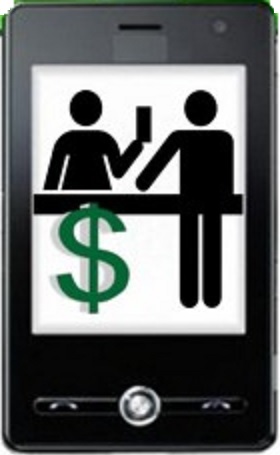Mobile shoppers are showing favor for applications, with many using apps to visit Flipkart and purchase products
Flipkart, one of India’s largest e-commerce companies, is beginning to see more success in the mobile commerce space. According to data from SimilarWeb, a data analytics firm, some 47% of Flipkarts visits now come through mobile shopping applications. The retailer has shown a great deal of interest in mobile commerce over the years and has been working harder to engage consumers with mobile devices. Flipkart now beats out other companies that have become involved in India’s mobile commerce space.
Consumers are making use of mobile applications to get their shopping done online
Flipkart also leads the way in total application installs in India. The company’s mobile shopping app is on approximately 37% of all Android devices in India. Consumers are becoming quite interested in mobile commerce and they have been turning to apps to get their shopping done. These apps provide them with access to convenient shopping and more retailers are beginning to rely on shopping applications in order to effectively engage consumers. Consumers are also making use of mobile websites, which some prefer to applications.
India is growing to become one of the world’s leading mobile commerce markets
 India has become one of the world’s fastest growing mobile commerce markets, alongside China. Indeed, e-commerce companies from China are beginning to show strong support for those in India, hoping to augment their success in the mobile commerce field. Companies responsible for mobile payments platforms also see great promise in India, especially as more consumers become involved in mobile shopping.
India has become one of the world’s fastest growing mobile commerce markets, alongside China. Indeed, e-commerce companies from China are beginning to show strong support for those in India, hoping to augment their success in the mobile commerce field. Companies responsible for mobile payments platforms also see great promise in India, especially as more consumers become involved in mobile shopping.
Mobile devices are becoming powerful tools for consumers interested in shopping online
Mobile commerce has become a very powerful force in India. The e-commerce market is dominated by mobile, with smartphones accounting for some 70% of the traffic that retailers are seeing online. Conventional computers, which had once been the primary tool for consumers shopping online, now account for 30% of all online traffic. Consumers are becoming heavily reliant on their mobile devices and believe that mobile commerce represents a more convenient way of shopping.
Enthusiasm for mobile payments is growing quickly among retailers and consumers alike
In 2015, the mobile payments space began to emerge as a mainstream power. Over the holiday season, various businesses were exposed to the success that could be had from a focus on the mobile sector, and their enthusiasm for mobile payments is likely to carry over into this year. Matt Asay, vice president of mobile for Adobe Marketing Cloud, noted that the holiday season was a fantastic time for mobile shopping despite the fact that many consumers reported stress from using mobile payments services.
Retailers are being pressured to improve the mobile shopping experience
Asay suggests that consumers are fairly ahead of retailers when it comes to mobile shopping. They are well aware of what they want in a mobile shopping experience, and retailers have been struggling to accommodate the demands coming from consumers. Converting mobile shoppers into actual paying customers has proven to be a challenge. Retailers are expected to focus more heavily on improving the mobile shopping experience in 2016.
Report shows that mobile payments will comprise 45% of all e-commerce transactions by 2020
 According to a recent report from BI Intelligence, mobile payments will comprise 45% of all e-commerce transactions by 2020. This will account for approximately $284 billion in sales. This is three times more in sales that is expected to be reported in 2016. Retailers may have to shift focus away from mobile applications in order to effectively engage the customers that are becoming invested in mobile payments. Mobile websites have, thus far, provided a better shopping experience for consumers than applications.
According to a recent report from BI Intelligence, mobile payments will comprise 45% of all e-commerce transactions by 2020. This will account for approximately $284 billion in sales. This is three times more in sales that is expected to be reported in 2016. Retailers may have to shift focus away from mobile applications in order to effectively engage the customers that are becoming invested in mobile payments. Mobile websites have, thus far, provided a better shopping experience for consumers than applications.
More retailers may begin supporting mobile payments in physical stores
Retailers are expected to begin supporting mobile payments in their physical stores as a way to provide consumers with a worthwhile experience. Many consumers already use their smartphones and tablets in physical stores, but only to search for and research products that they are interested in. Retailers may be able to increase conversion rates by supporting mobile payments at physical stores, allowing consumers to make purchases with their devices rather than traditional forms of commerce.
 India has become one of the world’s fastest growing mobile commerce markets, alongside China. Indeed, e-commerce companies from China are beginning to show strong support for those in India, hoping to augment their success in the mobile commerce field. Companies responsible for mobile payments platforms also see great promise in India, especially as more consumers become involved in mobile shopping.
India has become one of the world’s fastest growing mobile commerce markets, alongside China. Indeed, e-commerce companies from China are beginning to show strong support for those in India, hoping to augment their success in the mobile commerce field. Companies responsible for mobile payments platforms also see great promise in India, especially as more consumers become involved in mobile shopping.
 According to a recent report from BI Intelligence,
According to a recent report from BI Intelligence, 